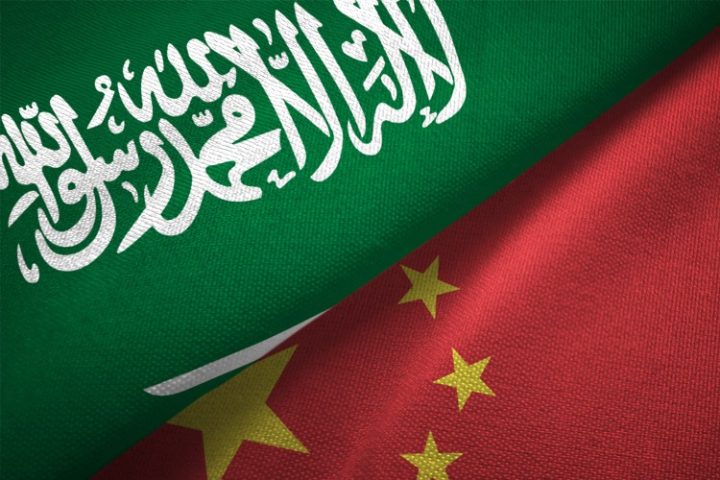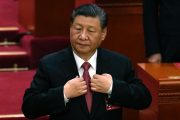
China’s inroads in the Middle East are now paying dividends.
The Saudi government on Thursday made the announcement that its navy and China’s People’s Liberation Army Navy (PLAN) have launched a three-week joint exercise called “Blue Sword.”
The two countries previously held a joint exercise with the same name back in 2019 near the port city of Jeddah in Saudi Arabia. This year, the exercises are being conducted off the southern Chinese city of Zhanjiang.
According to the Chinese state-run Global Times, “The goal of the exercise is to boost the mutual trust and friendly relations between the Chinese and the Saudi Arabian navies, enhance the participants’ capabilities in naval combat and comprehensively improve the joint operational capabilities of overseas armed rescue units.”
The outlet quoted a Chinese military expert who spoke on condition of anonymity: “China has many overseas interests, including investments, cooperation projects and overseas nationals. Sea routes connecting the Middle East to China are also vital to China’s trade and fuel imports.”
The drill will reportedly focus on simulating the hijacking of a commercial ship which must then be rescued by Chinese and Saudi forces. Beijing has organized similar exercises with Russia and Iran. The drills are of importance to China, whose trade puts its ships in dodgy waters susceptible to piracy.
“The joint training between the special warfare units of the two navies is of great significance to deepening the pragmatic and friendly cooperation between the two militaries and improving the actual combat training level of the troops,” the PLAN commander leading the Blue Sword drill told the South China Morning Post.
The exercise was first announced back in September. At the time, some observers saw it as part of China’s strategy to increase its involvement and influence in the Middle East. Some now believe the timing of Blue Sword could work to China’s advantage given the ongoing conflict between Israel and Palestine.
The Eurasian Times, for example, wrote: “The drills are significant as they come in the wake of China seeking closer ties with Saudi Arabia, including military cooperation. In contrast, the relationship between traditional allies Saudi Arabia and the United States has come under strain recently, especially after the Ukraine War and Riyadh’s stance on volumes of oil production.”
Earlier this year, South Africa hosted naval war games with Russia and China.
China has made key inroads in the Middle East.
In March, Saudi Arabia’s King Salman signed documents making his country a “dialog partner” in China and Russia’s Shanghai Cooperation Organization (SCO), which emphasizes defense and economic collaboration between its members. At the same time, Salman also approved vocational training with Russia.
When SCO was formed in 1996, it was composed of China, Russia, Tajikistan, Kazakhstan, and Kyrgyzstan. It has since added India, Uzbekistan, and Pakistan as full members. Other “dialog partners” include Armenia, Azerbaijan, Cambodia, Egypt, Nepal, Qatar, Sri Lanka, and Turkey.
Joint activities between member states have included combating terrorism and drug trafficking and conducting military exercises together to promote regional stability.
Notably, the bloc has in recent years placed an emphasis on cyberwarfare, a concept it has expanded to include information that is morally and culturally harmful.
In addition to joining SCO as a dialog partner, Saudi Arabia has recently join BRICS, an economic bloc currently consisting of Brazil, Russia, India, China, and South Africa. BRICS has its own bank, payment system, and framework for providing protection against global liquidity pressures. Saudi Arabia will be BRICS member as of January 1, 2024.
Also in March, China brokered a deal that restored Saudi-Iranian relations, which broke down in 2016 after the Sunni Islam kingdom executed a Shia scholar (Iran is a majority-Shia Muslim nation). This prompted Iranian protesters to storm Saudi consulates. Since then, the two nations have been at proxy war with each other in Yemen and Syria — but China’s diplomacy could be a factor in smoothing over tense relations.
In September, China became the first nation to officially appoint a new ambassador to Afghanistan since the Taliban took power there, and it is among those working closely with Afghanistan to develop its mining sector. And as The New American previously reported, the Taliban claims to have signed contracts worth $6.5 billion to let Chinese, British, Iranian, and Turkish companies conduct mining operations in Afghanistan.
In short, Russia and China’s influence in the Middle East continues to grow, while America’s wanes. Even Saudi Arabia, which has been an important partner of the United States, appears to be pulling away from Washington and gradually shifting its allegiance toward the alternative international order of Moscow and Beijing.
If this continues, the United States could soon find itself effectively driven out of the region for good with little ability to project soft power, and its ability to project military might curtailed due to military alliances backed by major powers such as Russia, China, and Saudi Arabia.
In the diplomatic war, Washington is clearly falling far behind its rivals, creating an uncertain future for the state of world affairs.




